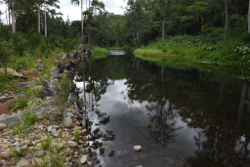|
|
Intervention optionsManagement intervention options listed below may be appropriate to use in achieving desired aquatic ecosystem rehabilitation outcomes. The options are filterable based on the selected theme and/or the aquatic ecosystem of interest and should be assessed on a case-by-case basis for the objectives required at the intervention site, in line with the key principles for rehabilitation. In all cases it is recommended that appropriate specialist advice is sought and legal obligations, such as permits, are clearly identified. Each management intervention option has a brief description, a list of potential benefits or negative implications from the intervention, and a list of intervention considerations. Additional information including publications and links to resources are provided. Search filtersTheme:
System:
This filter matches intervention options with all the selected properties
Displaying * of * intervention options Active revegetation
Agricultural treatment systems
Alignment training (timber pile fields)
Aquatic pest control
Assisted natural regeneration
Bank battering
Biopassage structures
Community and stakeholder engagement, extension and education
Discrete log jam structures
Fire regime management
Gabion baskets
Geotextiles
Grass chutes
Reinstate floodplain connection
Instream wood management
Integrated Stormwater Management (ISWM) or Water Sensitive Urban Design (WSUD)
Intertidal and subtidal
Lacustrine and Palustrine
Large wood placement
Management of terrestrial stock/feral animal access
Passive management
Post mining aquatic ecosystems
Rock armouring
Rock chute
Sediment extraction
Timber revetment
Timber sleeper drop weirs
Weed management
Last updated: 28 June 2022 This page should be cited as: Department of Environment, Science and Innovation, Queensland (2022) Intervention options, WetlandInfo website, accessed 8 May 2025. Available at: https://wetlandinfo.des.qld.gov.au/wetlands/management/rehabilitation/rehab-process/step-4/intervention-options/ |

 — Department of the Environment, Tourism, Science and Innovation
— Department of the Environment, Tourism, Science and Innovation


